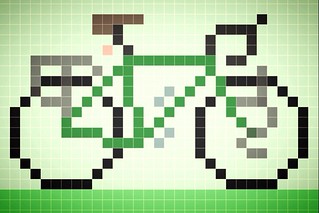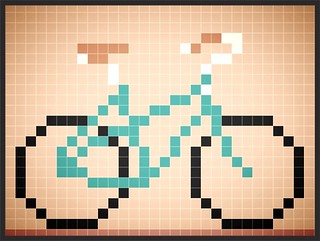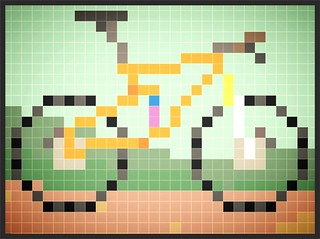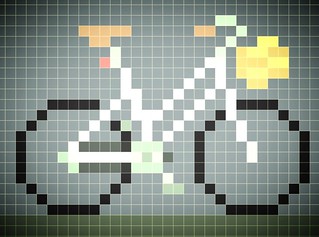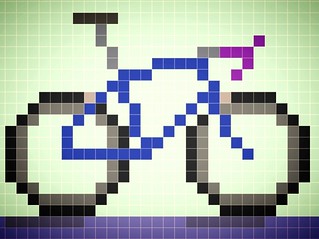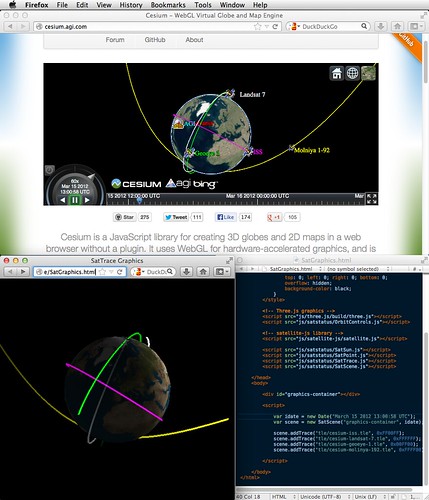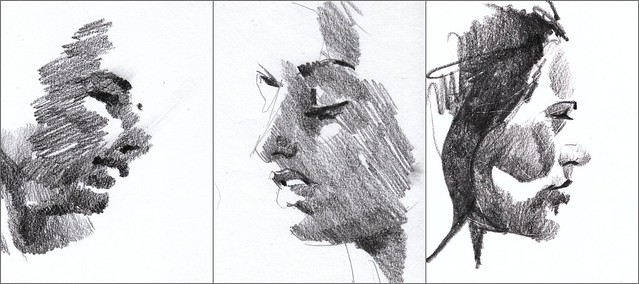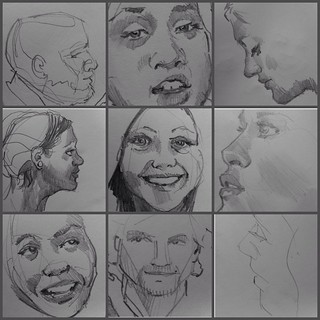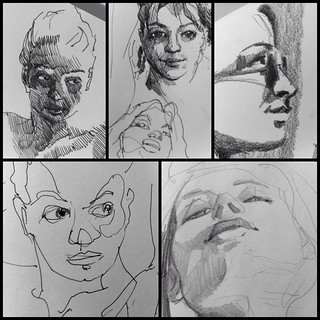Heightmap to STL
Hacked together a little tool called hmstl. It converts a heightmap – a grayscale image in which brighter pixels are interpreted as higher elevations – to STL, a format suitable for 3D printing.
Posted on Wednesday, October 30th, 2013.
Bitmap Bikes
Drawn on my telephone, just the way Picasso did.
Posted on Wednesday, October 30th, 2013.
Mobile Mouse Server for Linux 1.4.0
Bundling up a bunch of little tweaks to my fork of Mobile Mouse Server for Linux and calling it version 1.4.0. Get it here. Main changes include:
- Support for gesture commands (configured like hotkeys)
- Added option to ignore keyboard input
- Using
xdg-opento edit config file for greater compatibility across systems - Changes to icon and config file loading, towards goal of simpler external dependencies
- More detailed log messages and config file comments
At present mmserver must still be compiled manually. A goal for the next release is to make use of some package management system to take care of setup automatically.
Posted on Friday, September 27th, 2013.
Cesium Exposure
Last weekend I discovered Cesium, a sophisticated WebGL virtual globe engine developed as an open source project by AGI. Among other things, it can be used to interactively display satellite orbits in 3D in a web browser…
…which is exactly what I’ve been building in SatStatus, my summer “coffee shop programming project”. So, I admit I felt discouraged to discover I was not the first to develop the concept. However, it also feels good to realize that I, operating as a hobbyist and enthusiast only, identified the same niche and was able to build a visualization tool with comparable core capabilities (see screenshot at right).
SatStatus exists as pretty rough proof-of-concept code (I’m learning Javascript as I go), whereas Cesium appears to be put together with an admirably rigorous testing and review process. Cesium also has many more features than SatStatus. Some, like support for surface terrain and arbitrary feature markup, are beyond the scope of what I had planned; others, like ready-made reference time controls and multiple camera modes, were on my to-do list.
One difference is that SatStatus was designed from the start to be able to propagate satellite locations in real-time using a set of recent TLEs and Shashwat Kandadai’s Javascript implementation of the SGP4/SDP4 algorithm. If my cursory reading of the documentation is correct, this is possible in Cesium as well, but only by streaming satellite positions as CZML markup from another source. (To be clear, this is reasonable, given that Cesium is a general purpose display engine, whereas real-time satellite tracking is just one specific application.)
Now I must decide how to proceed. It is certainly satisfying to build something from scratch, but now that I know something very similar is already available, it would make sense to fast-forward my effort to focus on the web site I eventually planned to build around the 3D viewer.
Besides the goal of powering a new public real-time satellite tracking site, SatStatus was also intended as a “portfolio project” to learn about Javascript development, graphics programming, and the varied interest many Earthlings have in monitoring our space-based assets. That goal can still be met, with the added benefit of a good example to study, by participating in the Cesium project.
Posted on Saturday, September 21st, 2013.
Chipmunk Basic Stuff on GitHub
I’ve posted a bunch of my old Chipmunk Basic sample code to a Chipmunk Basic Stuff repository on GitHub. Much of it is still available on this page, but that page will not be updated and may be deleted.
As with the Applescripts I posted a few weeks ago, I’m stowing this archival stuff on GitHub for two reasons:
- It provides a nice online interface for glancing at the code and revision history.
- I’d like to prune some of the dustier old pages from this site without culling the content from the internet altogether. (Stats indicate a small but steady stream of people searching for Chipmunk Basic information do end up here.)
Posted on Thursday, September 12th, 2013.
Modified Mobile Mouse Server for Linux
![]() Mobile Mouse is a neat app that allows you to use your iOS or Android device as a keyboard and pointing device for your computer. The mobile app works in concert with a small server program that must be installed on your computer to convert input from the app to actual keyboard and mouse events. Official Mac and Windows server programs are provided by the makers of Mobile Mouse. A Linux version was developed by Erik Lax and later updated by Kiriakos Krastillis. Now, I’ve made a few changes and posted my own version. Find it here: https://github.com/anoved/mmserver
Mobile Mouse is a neat app that allows you to use your iOS or Android device as a keyboard and pointing device for your computer. The mobile app works in concert with a small server program that must be installed on your computer to convert input from the app to actual keyboard and mouse events. Official Mac and Windows server programs are provided by the makers of Mobile Mouse. A Linux version was developed by Erik Lax and later updated by Kiriakos Krastillis. Now, I’ve made a few changes and posted my own version. Find it here: https://github.com/anoved/mmserver
My changes include:
- Revised mouse acceleration
- Enabled horizontal scrolling
- Enabled middle mouse button
- Keyboard and keypad input fixes
- Added more configuration options
I use it with Linux Mint on my old laptop and Raspbian on my Raspberry Pi.
Posted on Tuesday, September 10th, 2013.
Portrait Doodles
Phone photo collages of some recent sketches:
Content with none, but there’s something I like in each. So, reason to do more.
Posted on Sunday, September 1st, 2013.
Yojimbo Scripts on GitHub
My Yojimbo Scripts repository contains a bunch of old scripts (sans documentation, unfortunately) for use with Yojimbo. Most but not all have previously been posted here. I am posting them now as a single collection on GitHub in order to make it easier for others to find and make use of the code.
Posted on Wednesday, August 28th, 2013.
Finder Scripts on GitHub
My Finder Scripts repository now houses the AppleScripts I wrote for use with the Mac OS X Finder. GitHub provides a better interface for browsing code, managing revisions, and collecting feedback than ad hoc blog posts. In the interest of making my old scripts more accessible to anyone who may find them useful, I intend to re-release them all as open source git repositories.
- LSelect – select files using shell glob syntax (matching against filenames)
- Select Grep – select files using grep (matching against [text] file contents)
- Open As – create and open an explicitly named duplicate of the selected file
Posted on Wednesday, August 28th, 2013.

